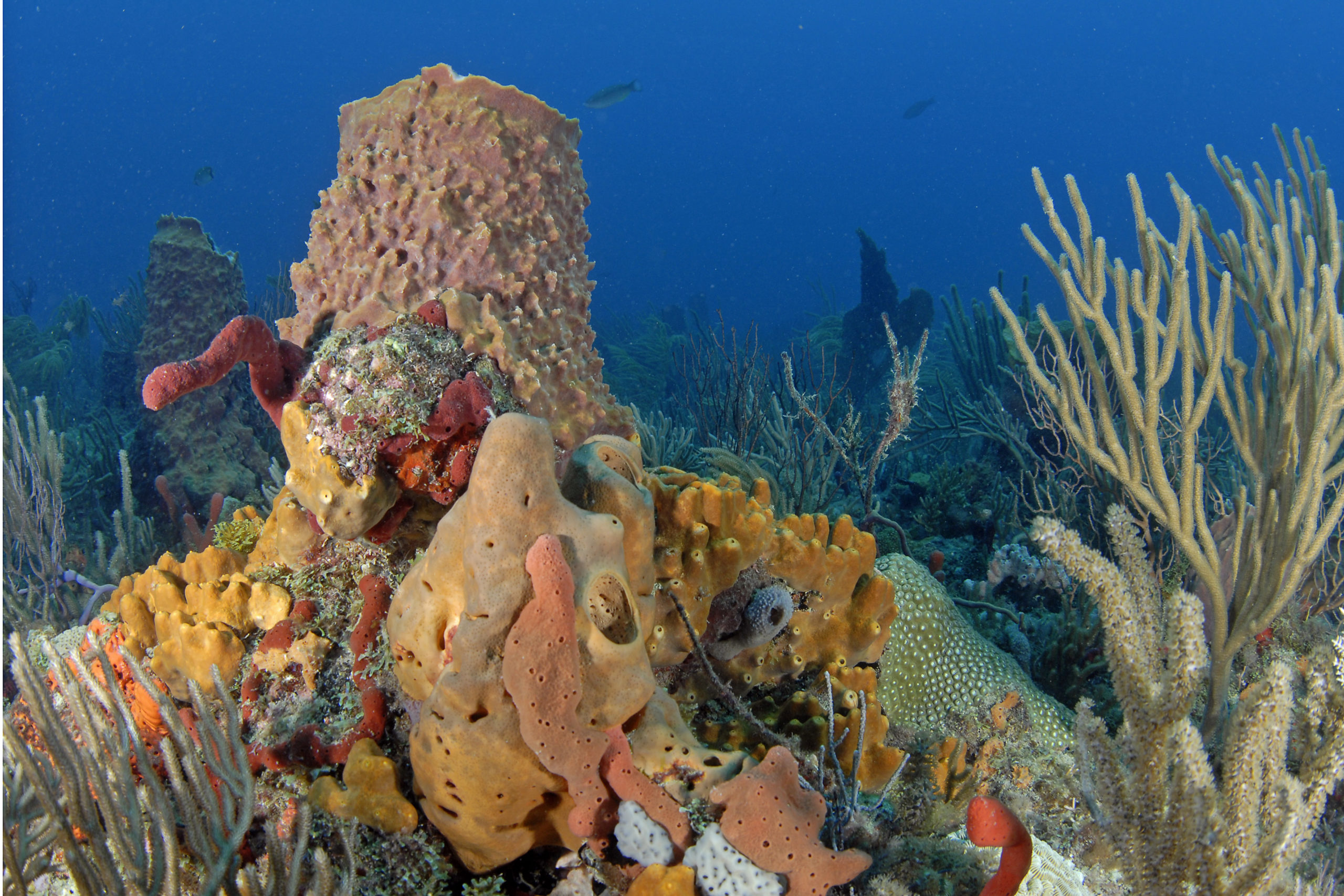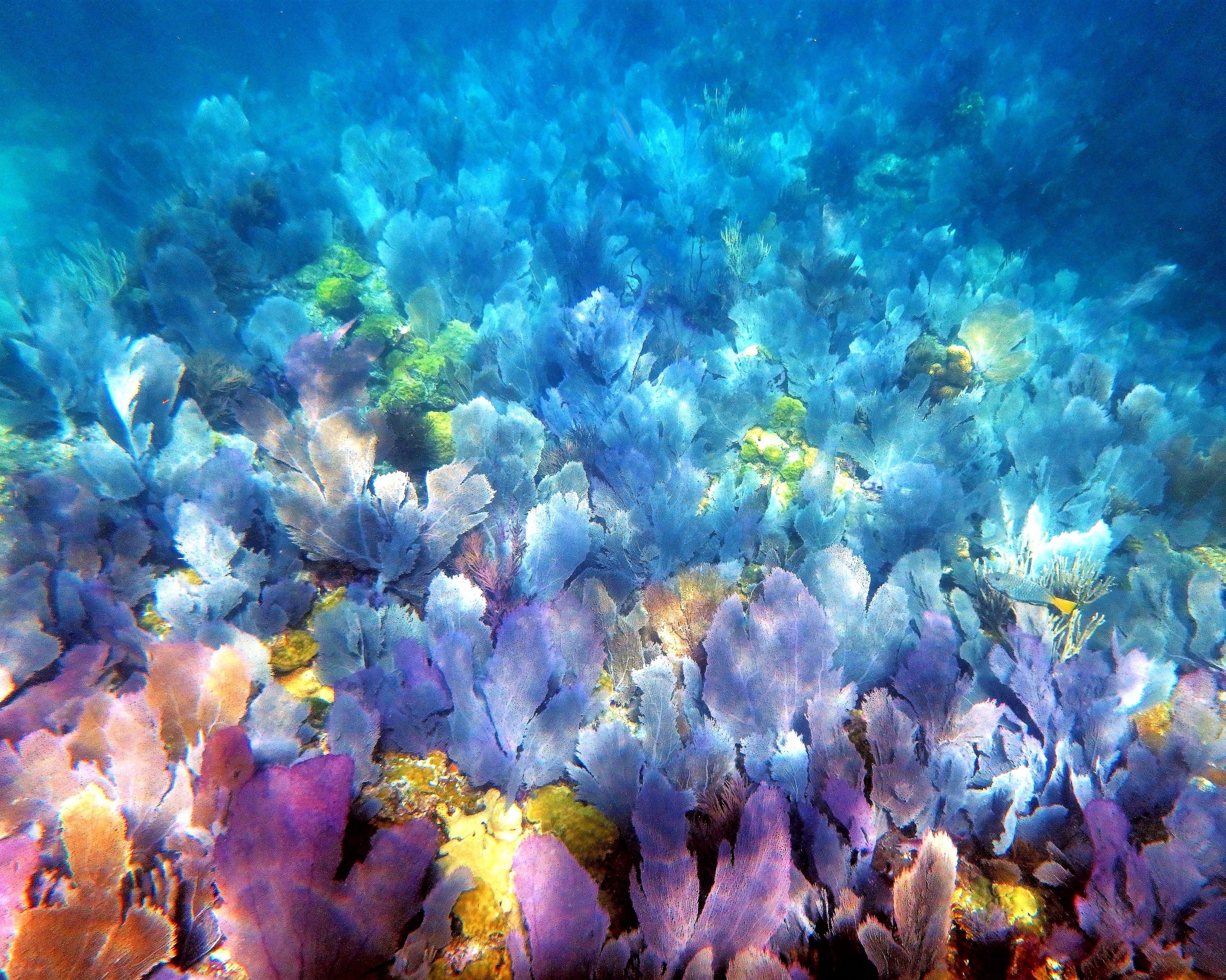Reef-wide Outplanting of Corals Susceptible to Stony Coral Tissue Loss Disease Begins
The Florida Fish and Wildlife Conservation Commission (FWC), the Florida Department of Environmental Protection (DEP) and our coral reef restoration…
The Florida Fish and Wildlife Conservation Commission (FWC), the Florida Department of Environmental Protection (DEP) and our coral reef restoration…
Learn about how our partners are making a difference with Florida’s Coral Reef.

The St. Lucie Inlet separates the barrier islands of Hutchinson Island and Jupiter Island. The inlet connects several lagoon and estuarine tidal systems to the Atlantic Ocean and is approximately half a mile from the reef. To the south, you’ll find St. Lucie Inlet Preserve State Park, a barrier island and 3,500 acres of marine waters that fall within the park boundary. This also includes an impressive Anastasia worm reef that extends nearly five miles along the coast.
This area of the reef is best reached by boat, and ranges from depths of five to 35 feet, making it a haven for snorkelers, divers and fishers looking to encounter the amazing diversity of species found on the reef. Visitors that snorkel and dive here may encounter spotted eagle rays, grouper, angelfish and nurse sharks, to name a few. Fishers can find a bounty of Spanish mackerel, yellowtail snapper and snook. St. Lucie Inlet is also part of the Great Florida Birding Trail and provides excellent opportunities to spot shorebirds such as great blue herons, brown pelicans, white ibis and the purple plover.

The Southeast Florida Coral Reef Ecosystem Conservation Area (Coral ECA) covers approximately 105 miles of Florida’s Coral Reef from the northern boundary of Biscayne National Park in Miami-Dade County to the St. Lucie Inlet in Martin County. This area is managed by the Florida Department of Environmental Protection’s Coral Reef Conservation Program (CRCP).
These reefs support a rich and diverse assemblage of stony corals, soft corals, macroalgae, sponges, fishes.
Through its supporting membership on the U.S. Coral Reef Task Force and the U.S. All Islands Committee, DEP’s Coral Reef Conservation Program leads the implementation of the Southeast Florida Coral Reef Initiative (SEFCRI), a team of 68 interagency and non-agency stakeholders contributing to the conservation and management of coral reefs.
The Coral Reef Conservation Program is also charged with coordinating responses to vessel groundings and anchor damage incidents in southeast Florida state waters and developing strategies to prevent coral reef injuries, under the Coral Reef Protection Act.

Bordering the cultural, economic and financial center of South Florida in Miami, Biscayne Bay Aquatic Preserves (Biscayne Bay Aquatic Preserve and Biscayne Bay-Cape Florida Aquatic Preserve) cover less than 70,000 submerged acres of the largest estuary on the coast of southeast Florida.
Established by the Florida Legislature in 1974 and 1975 and managed by the Florida Department of Environmental Protection, this ecologically significant area provides habitat for a wide variety of wildlife, including several imperiled species such as the Florida manatee, smalltooth sawfish, American crocodile and Johnson’s seagrass.
Johnson’s seagrass is the first and only marine plant to be listed as ‘threatened’ on the Endangered Species List and lives in northern Biscayne Bay.
Many fish species found on Florida’s Coral Reef spend their juvenile life stages among the mangroves within the Aquatic Preserves. Mangroves serve as nurseries for fish that are caught recreationally and commercially.
Four Florida State Parks offer access to the preserves, including The Barnacle Historic State Park, Bill Baggs Camp Florida State Park, John Pennekamp Coral Reef State Park and Oleta River State Park.
Biscayne Bay Aquatic Preserves is also part of the Florida Circumnavigational Saltwater Paddling Trail, a 1,515-mile trail that encompasses every coastal Florida habitat type.

Biscayne National Park can be spotted right from downtown Miami and hosts its own bustling underwater city full of marine life along Florida’s Coral Reef. As the United States’ largest marine park, the National Park Service manages and conserves nearly 173,000 acres — which are 95% underwater. Most park visitors come by boat, and can find a medley of colorful sights and exhilarating movement on the reef. Here, elkhorn corals, sea fans and brain corals create living coral community centers for sea turtles, nurse sharks and over 500 species of reef fish that are diverse in color, shape, size and behavior.
Visitors to Biscayne National Park can discover these wonders in a variety of ways; including fishing, boating, diving, snorkeling, paddling and more. Guided tours offer visitors an opportunity to explore the reef as well as the coral that inhabit the remains of nearly a century of shipwrecks along the Maritime Heritage Trail.

John Pennekamp Coral Reef State Park is renowned as the country’s first undersea park, encompassing 70 nautical square miles of coral reef, seagrass beds and mangrove swamps managed by DEP’s Florida Park Service. The park, located in Key Largo, was established to protect and preserve a portion of Florida’s Coral Reef, the only living coral barrier reef in the continental United States. The park features a great variety of tropical plants and animals, shore birds and marine life.
Visitors to the park can discover Florida’s Coral Reef by guided glassbottom boat tours which offer a glimpse into this fascinating undersea world from the comfort of the park’s flagship Spirit of Pennekamp. For the more adventurous, guided and unguided snorkeling and SCUBA diving experiences are available to visit the creatures who call the reef home. All tours offered by the park’s official concessionaire operation have received a Blue Star designation for promoting responsible and sustainable practices to support a healthy reef.
Take a virtual tour of John Pennekamp Coral Reef State Park.

Florida Keys National Marine Sanctuary, which protects 3,800 square miles of highly diverse and economically valuable marine habitats, is one of fourteen marine protected areas that comprise the National Marine Sanctuary System. Its boundaries encompass a large portion of Florida’s Coral Reef, 1.4 million acres of seagrass, and 1,800 miles of mangrove shoreline supporting more than 6,000 species of marine life. Designated in 1990, the sanctuary is co-managed by NOAA and the State of Florida.
World-class diving, fishing, boating and other water-related activities draw millions of visitors annually. Florida Keys National Marine Sanctuary provides cutting edge scientific research and conservation efforts, innovative education and citizen science programs, and volunteer opportunities. More than 75,000 people annually visit its Florida Keys Eco-Discovery Center, a 6,000 square foot interactive learning space for all ages.

At the southernmost point of Florida’s Coral Reef, approximately 70 miles west of Key West, Dry Tortugas National Park is 100 square miles of open, picturesque blue waters, seven small islands and the historic Fort Jefferson.
One of the park’s greatest and most magnificent treasures lies below the water’s surface – Florida’s Coral Reef. Among the most vibrant in the Florida Keys, the park’s corals are abundant, representing about 30 species, including elkhorn, staghorn, and pillar coral, all of which are listed as threatened under the Endangered Species Act.
This rich landscape of living corals furnishes a unique habitat for a variety of colorful marine life, including parrot fish, angel fish, triggerfish, damselfish and others.
On the edge of the swim area at Garden Key, the second largest island in the Dry Tortugas, visitors can glimpse massive, more than 250-year-old coral colonies and excellent examples of both stony and soft corals.
Located just a few yards off the western shore of Loggerhead Key, the park’s largest island, is Little Africa Reef. This remarkable coral formation is aptly named because the corals collectively resemble the continent of Africa when viewed from the sky.
Visitors to Dry Tortugas National Park can experience Florida’s Coral Reef by snorkeling, diving, boating or guided tour.